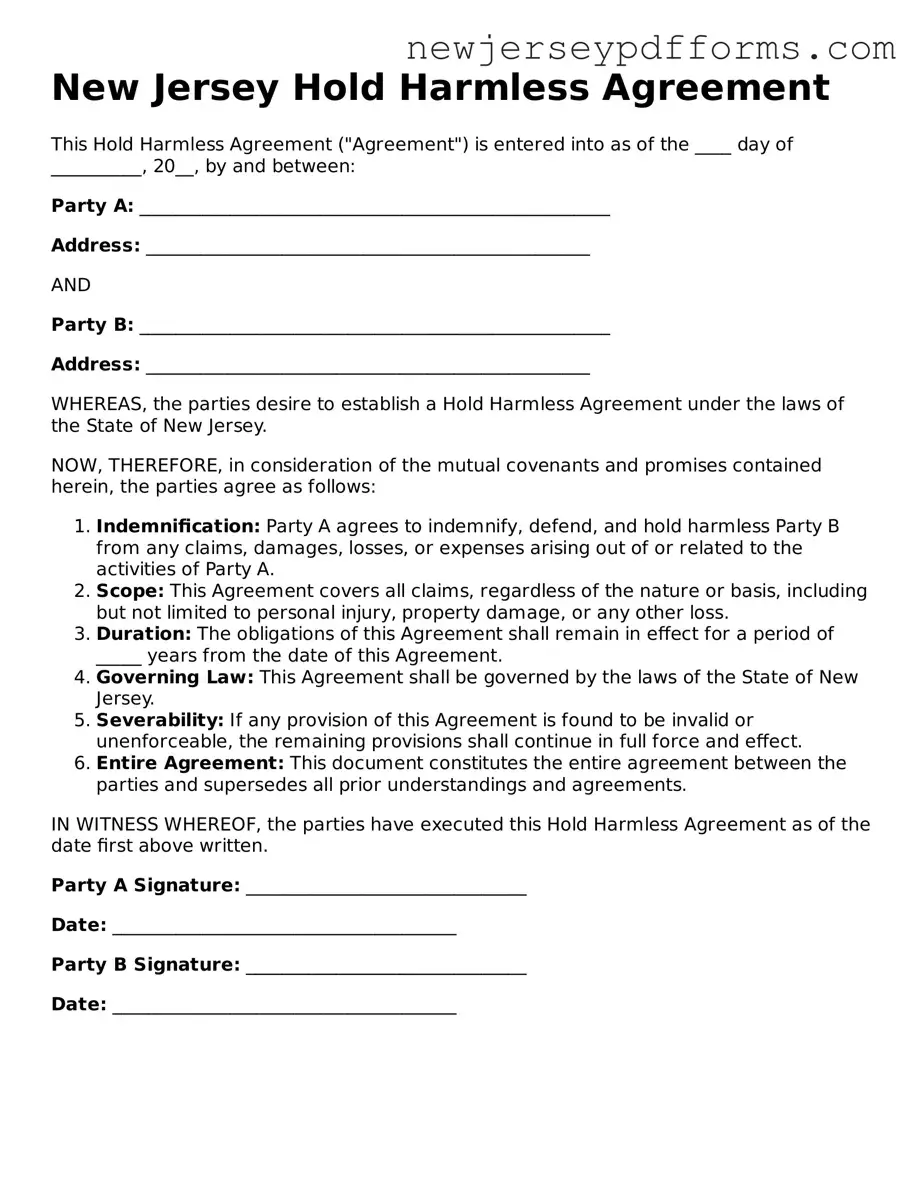Filling out a Hold Harmless Agreement in New Jersey can seem straightforward, but many people make common mistakes that can lead to complications later on. Understanding these pitfalls can help ensure that your agreement is valid and enforceable.
One frequent error is not providing complete information. When filling out the form, it’s crucial to include all necessary details, such as names, addresses, and the specific activities covered by the agreement. Omitting even one piece of information can lead to misunderstandings or disputes down the line.
Another common mistake is failing to read the entire document. It’s easy to skim through the agreement, but doing so can result in missing important clauses or conditions. Take the time to carefully review each section to understand your rights and obligations.
People often overlook the importance of having the agreement notarized. While notarization may not be required in every situation, having a notary public witness the signing can add an extra layer of protection. This step helps verify that all parties involved are indeed who they claim to be and that they signed the document willingly.
Additionally, some individuals forget to include a date. A date is essential for establishing when the agreement takes effect. Without it, there could be confusion about the timeline of events, which could complicate any claims or disputes that arise later.
It’s also crucial to avoid using vague language. Some people make the mistake of being too general in their descriptions of the activities covered. Clear, specific language helps to avoid ambiguity and ensures that all parties understand the scope of the agreement.
Finally, many individuals neglect to keep a copy of the signed agreement. After the form is completed and signed, it’s vital to retain a copy for your records. This ensures that you have access to the terms of the agreement should any issues arise in the future.
By being aware of these common mistakes, you can fill out the New Jersey Hold Harmless Agreement form with confidence and clarity, ensuring that your interests are protected.
